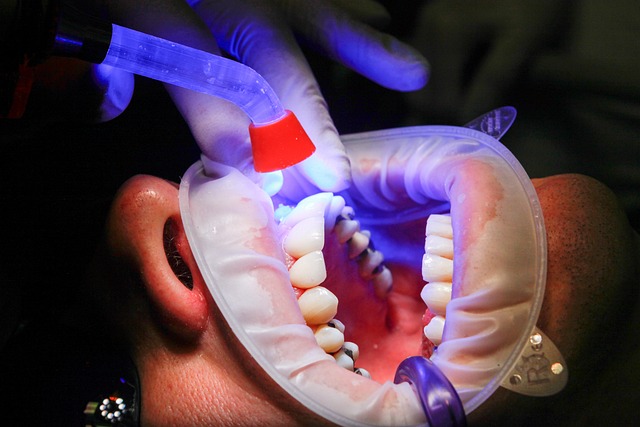Dental malpractice insurance protects dentists from financial losses and legal liabilities due to treatment errors or omissions. Coverage includes general liability for patient injuries, legal fees, and settlement costs. Policy types vary (professional liability, occurrence-based, claims-made), with optional endorsements for specialized risks. Costs are influenced by specialty, location, and claims history; clean records lead to lower premiums. Filing a malpractice suit requires gathering detailed documentation and consulting legal specialists. Regular training, record-keeping, communication, and staying updated minimize malpractice risks. Malpractice insurance safeguards dentists from liabilities and ensures patient safety through evidence-based care.
Dental malpractice coverage is an essential aspect of protecting your practice and patients. This comprehensive guide simplifies navigating dental malpractice insurance, providing a clear understanding of its scope and importance. We’ll explore various policy types, factors influencing premiums, and the claim process. Learn about common scenarios leading to lawsuits and how to prevent them. Additionally, we delve into legal obligations and the duty of care in dentistry, offering valuable insights for dentists seeking robust malpractice protection.
- Understanding Dental Malpractice: What It Covers
- Types of Malpractice Insurance Policies for Dentists
- Factors Affecting Malpractice Insurance Premiums
- Claim Process: Steps to File a Dental Malpractice Suit
- Common Dental Malpractice Scenarios and Prevention
- Legal Obligations and Duty of Care in Dentistry
Understanding Dental Malpractice: What It Covers

Dental malpractice insurance is designed to protect dentists from financial loss and legal liabilities that may arise from errors or omissions during dental treatment. It covers a wide range of incidents, including negligence such as incorrect diagnoses, improper treatments, or failure to obtain informed consent. This insurance is essential for dentists as it shields them from potential lawsuits and helps ensure their professional integrity.
When considering malpractice insurance for dentists, understanding the coverage is key. Policies typically include general liability, which compensates patients for injuries sustained during dental procedures. Additionally, they may offer coverage for legal fees and settlement costs incurred during defense against a lawsuit. Knowing these provisions can help dentists make informed decisions about their practice’s financial security.
Types of Malpractice Insurance Policies for Dentists

Dentists, like all medical professionals, face potential risks associated with their practice, and one way to mitigate these risks is through the acquisition of malpractice insurance. Malpractice insurance for dentists comes in various forms, each catering to specific needs and scenarios within the dental profession. The most common types include professional liability insurance, which covers claims arising from negligence or errors in diagnosis or treatment; occurrence-based policies, that provide coverage for incidents occurring during a specific policy period; and claims-made policies, which offer protection if a claim is made against the dentist during the policy period, even if the incident happened before.
Additionally, dental malpractice insurance may include coverages for legal expenses, such as attorney fees, court costs, and settlement or judgment amounts, ensuring dentists are adequately protected in the event of litigation. Some policies also offer optional endorsements for specific risks, such as coverage for psychological harm caused by dental procedures or incidents involving radiation exposure. Choosing the right malpractice insurance policy is crucial for dentists to safeguard their practice and personal assets from potential financial liabilities.
Factors Affecting Malpractice Insurance Premiums

Several factors influence the premiums dentists pay for malpractice insurance, a necessary cost for protecting their practices and patients. One significant factor is the dentist’s specialty; procedures that carry higher risk, such as complex oral surgeries or implantology, often lead to higher premiums due to the potential for unforeseen complications. Location also plays a critical role; areas with higher patient demand and liability risks typically result in more substantial insurance costs.
Another critical aspect is the dentist’s track record and claims history. Insurers consider past claims and legal actions against the practitioner when calculating premiums. A clean record can lead to more affordable coverage, while multiple previous incidents or significant settlements will generally drive up malpractice insurance for dentists.
Claim Process: Steps to File a Dental Malpractice Suit

Filing a dental malpractice suit involves several crucial steps. First, it’s essential to gather all relevant information and documentation related to the incident. This includes medical records, treatment details, and any communication with the dentist in question. Additionally, gathering evidence such as X-rays or photographs that illustrate the issue can significantly strengthen your case.
Next, you’ll need to identify and consult with a legal professional experienced in dental malpractice cases. They will guide you through the process, assess the strength of your claim, and help determine if pursuing legal action is the best course of action based on the available evidence. If proceeding, they will assist in preparing and submitting your claim within the applicable statute of limitations, ensuring compliance with legal procedures and deadlines.
Common Dental Malpractice Scenarios and Prevention

Dental malpractice scenarios can range from misdiagnosis, improper treatment plans, or errors during procedures like fillings, extractions, or implant surgeries. Another common issue is inadequate communication, where dentists fail to explain treatments clearly to patients, leading to unnecessary anxiety or dissatisfaction. Prevention is key when it comes to dental malpractice insurance for dentists. Regular training and continuing education can equip practitioners with the latest techniques and knowledge, reducing the likelihood of errors. Implementing robust systems for patient record-keeping and communication ensures that every interaction is documented and understood by both parties. Additionally, staying up-to-date with medical advances and guidelines helps in delivering the best possible care, minimizing malpractice risks.
Legal Obligations and Duty of Care in Dentistry

In dentistry, much like any other healthcare profession, the primary focus is on patient safety and well-being. This involves a legal obligation and duty of care that requires dentists to adhere to specific standards in their practice. Malpractice insurance for dentists is designed to protect them from potential liabilities arising from breaches of this duty. These obligations encompass proper diagnosis, informed consent, use of appropriate treatments or procedures, and avoiding harm during any dental work.
Dentists are expected to follow evidence-based practices and stay current with advancements in their field. They must also ensure patient comfort, obtain necessary consents, and communicate potential risks and benefits of proposed treatments transparently. Malpractice insurance serves as a safeguard against claims that may occur due to errors or omissions in these critical areas, offering financial protection for dentists while ensuring patients receive the highest standard of care.
